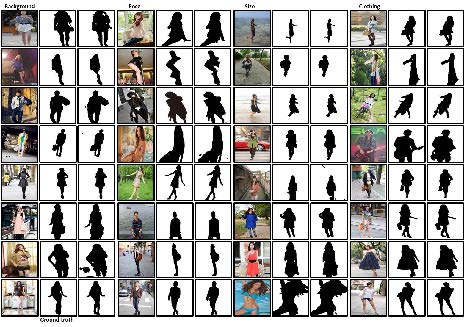Early Hierarchical Contexts Learned by
Convolutional Networks for Image Segmentation
 |
| An overview of our method |
People
Zifeng Wu
Yongzhen Huang
Yinan Yu
Liang Wang
Chunfeng Song
Overview
We propose a foreground segmentation method based on convolutional networks. To predict the label of a pixel in an image, the model takes a hierarchical context as the input, which is obtained by combining multiple context patches on different scales. Short range contexts depict the local details, while long range contexts capture the object-scene relationships in an image. Early means that we combine the context patches of a pixel into a hierarchical one before any trainable layers are learned, i.e., early-combing. In contrast, late-combing means that the combination occurs later, e.g., when the convolutional feature extractor in a network has already been learned. We find that it is vital for the whole model to jointly learn the patterns of contexts on different scales in our task. Experiments show that early-combing performs better than late-combing. On the dataset built up by Baidu IDL for a latest person segmentation contest, our method beats all the competitors with a considerable margin. Qualitative results also show that the proposed method is almost ready for practical application.
Paper
 |
Early Hierarchical Contexts Learned by Convolutional Networks for Image Segmentation Zifeng Wu, Yongzhen Huang, Liang Wang, Tieniu Tan International Conference on Pattern Recognition (ICPR 2014) |
Our Network
 |
| The structure of our network, which is composed of three five-stage convolutional columns and a three-layer perceptron. The details of the second and third columns are omitted, since they are respectively the same as the first column. C: convolution; P: pooling; C1-C5: convolution layers; F1-F3: full-connected layers. |
Experimental Results
 |
| Segmentation results obtained on Baidu's test set under various conditions. To the right of each image are in turn its ground-truth and our result. |
Acknowledgments
Thanks to Weiqiang Ren for his hard work to contribute a CPU implementation of CUDA-convnet. This work is jointly supported by National Basic Research Program of China (2012CB316300) and National Natural Science Foundation of China (61135002, 61175003, 61203252).

